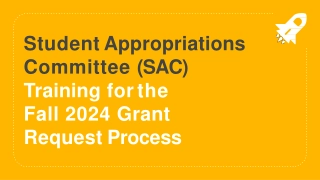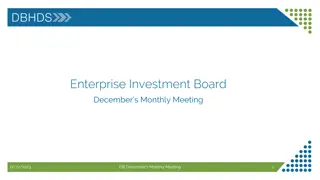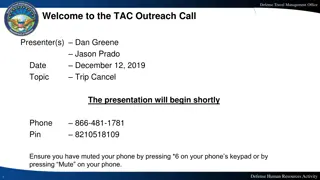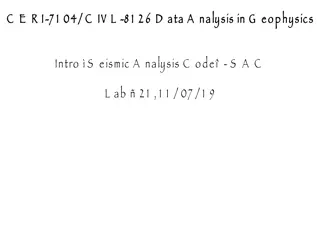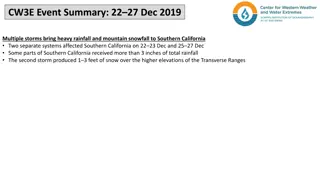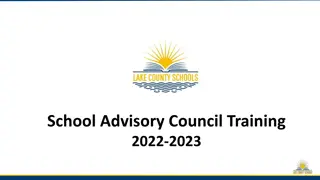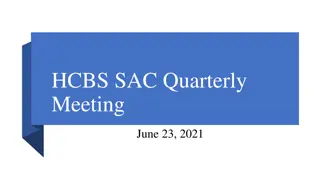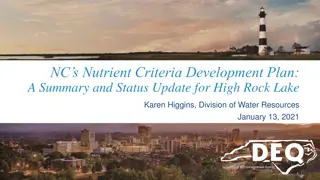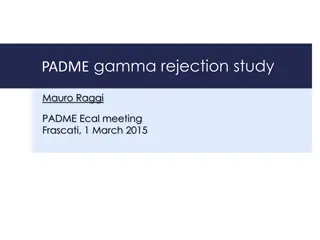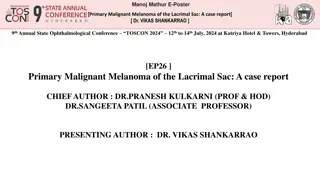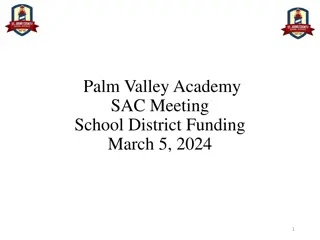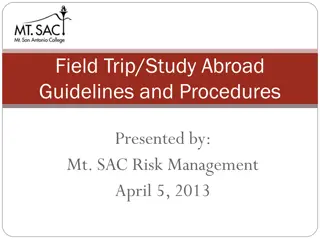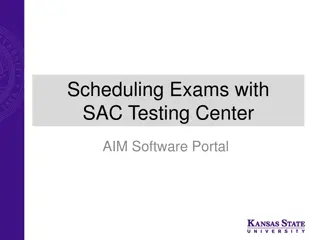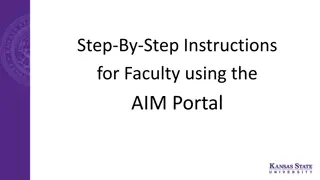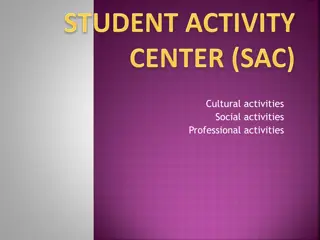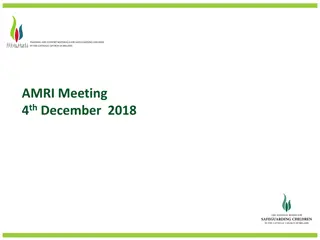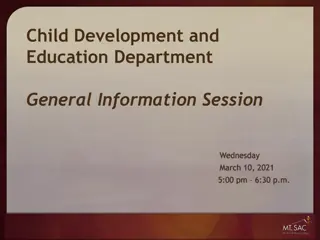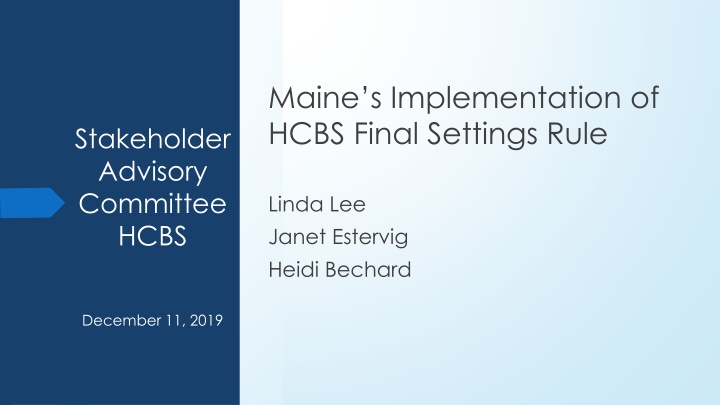
Maine's HCBS Final Settings Rule Implementation Updates
Explore Maine's progress in implementing the HCBS Final Settings Rule through stakeholder involvement, provider self-assessment processes, validation of settings, and updates on compliance initiatives. Learn about key challenges, funding information, compliance requirements, and ongoing monitoring efforts to ensure quality outcomes for individuals in the community.
Download Presentation

Please find below an Image/Link to download the presentation.
The content on the website is provided AS IS for your information and personal use only. It may not be sold, licensed, or shared on other websites without obtaining consent from the author. If you encounter any issues during the download, it is possible that the publisher has removed the file from their server.
You are allowed to download the files provided on this website for personal or commercial use, subject to the condition that they are used lawfully. All files are the property of their respective owners.
The content on the website is provided AS IS for your information and personal use only. It may not be sold, licensed, or shared on other websites without obtaining consent from the author.
E N D
Presentation Transcript
Maines Implementation of HCBS Final Settings Rule Stakeholder Advisory Committee HCBS Linda Lee Janet Estervig Heidi Bechard December 11, 2019
Stakeholder Involvement Janet Estervig The challenges of change Building support and not just compliance Looking at the gaps in services and being innovative with solutions Supporting a life in the community A deliberate change in focus of HCBS Cultural changes that include person-centered thinking, presumed competence, individual rights, supported decision making and quality outcomes Maine receives approximately $333,021,477 in federal funds to operate its HCBS programs and combined with state funds this constitutes almost $500,000,000 for HCBS funding that serves over 6,500 individuals across the state.
HCBS Provider Self-Assessment Process 3 Phone Reviews and Onsite Reviews Validation of the Self- Assessment Responses Provider Self-Assessment Ongoing Compliance Monitoring of Settings Notification to Providers and Implementation of Remediation Process Notification of Final Determination
Validation of Settings Medicaid HCBS Settings Rule Compliance Initiative Heidi Bechard
State must determine how compliant existing settings are currently. First step is having providers complete self-assessments for each setting Second step (required by CMS) is state validating the provider self-assessment data What is Validation? Validation determines how compliant an existing setting is right now, and what must be done to bring that setting into full compliance by March 2022.
Update on Provider Self-Assessment Process Residential Settings Non-Residential Settings Shared Living (Related Provider) 660 Shared Living (Unrelated Provider) 514 Group Homes (2-6 ppl) 893 Family-Centered Homes 91 Community Supports Clubhouse Work Supports-Group Total Settings = 2,076 Total Settings = 183 Submitted Self-Assessments = 2,059 Submitted Self-Assessments = 181 Submission Rate = 99.2% Submission Rate = 98.9% Self-Assessments Still Due = 17 Self-Assessments Still Due = 2 EXTENDED Deadline for Late Submissions: Dec 13, 2019 Non-Submission: Intensive Validation by DHHS
Shared Living Clarification: related vs. non-related How to answer specific assessment questions Frequently Asked Questions of the HCBS.DHHS Mailbox Sites/settings that have moved from one agency to another Additional +3 settings Restrictive measures
Clarification requests related to: agency assessment vs. setting assessment Frequently Asked Questions of the HCBS.DHHS Mailbox (cont.) Do our services require an assessment? How to access the portal NPI vs. EIS ID number
How Does Maine Plan to Validate Provider Self-Assessments? 1st Method of 2: On-Site Visits Up to 500 settings (22.1% of all settings) Percentage of each setting type not yet decided 4 Residential setting types 3 Non-Residential setting types
How Does Maine Plan to Validate Provider Self-Assessments? 2nd Method of 2: Desk Review + Individual Experience Assessment (IEA) Survey All settings that do not get the On-Site Visit Provider submits information/documentation to support answers in Self-Assessment Support Coordinator/Care Coordinator/Case Manager conducts interview with member (and guardian if one appointed) to complete IEA Survey. All information combined is used to determine current compliance and any areas of partial or noncompliance that need to be addressed.
Contract in place with Disability Rights Maine (DRM) to conduct on-site validation Proposed Plan: How Will On-Site Reviews Work? EconSys and DRM working together now to develop and finalize Validation Tools DRM will recruit, train, and provide ongoing technical assistance to Validators with help as needed from EconSys On-site validation visits will occur on a rolling basis, between February, 2020 and October 2020 If a provider has multiple settings selected for on-site validation, only the first validation visit will request/review agency policies, etc.
Proposed Plan: Prioritizing Focus of Validation Visits Setting Self-Assessment questions for which provider answers suggest partial or noncompliance with Settings Rule requirements Setting Self-Assessment questions that address whether the setting may be isolating and therefore subject to Heightened Scrutiny process Any setting Self- Assessment questions unanswered by provider Policy review for a setting that is first for a specific provider agency Brief interviews with people receiving HCBS who are present in the setting Remainder of Setting Self- Assessment questions as time allows
Proposed Plan: Desk Review/Individual Experience Assessment Survey Validation DHHS/OADS will identify individuals to conduct Desk Reviews EconSys developing desk review process and procedures (CMS recommended Wyoming s approach) EconSys will train Desk Reviewers and provide ongoing technical assistance to Desk Reviewers as needed Desk Reviews will occur on a rolling basis, between February 2020 and October 2020 Individuals receiving HCBS in settings selected for Desk Review will have an Individual Experience Assessment Survey completed with the person
Providers will receive the results of a setting validation within 30 days of the validation process being completed for that setting. Based on the setting validation results, each setting with areas of partial or non-compliance will be required to have a setting-specific Transition-to-Compliance Plan. DHHS/EconSys will provide a plan and template for providers to use. Proposed Plan: After Validation After they receive their settings validation results, providers will have 30 days to submit an approvable Transition-to-Compliance Plan for the setting. State and/or EconSys staff will be available to answer questions and provide technical assistance to providers as they develop these Transition-to-Compliance Plans.
All Transition-to-Compliance Plans must be fully implemented (all action steps completed) by October 31, 2021. The state and EconSys will monitor provider progress on implementation of their Transition-to-Compliance Plans to ensure the October 31, 2021 deadline is met. Proposed Plan: After Validation cont. If any setting does not meet the October 31, 2021 deadline, the state is required to ensure safe and orderly transitions of individuals wishing to continue to receive HCBS to compliant settings so that these relocations are completed in a person-centered manner by no later than March 17, 2022.
Individual Experience Assessment Survey: Input from SAC The Individual Experience Assessment (IEA) is the proposed tool to be utilized during provider owned and/or controlled on-site validation visits. This assessment is intended to measure each member s level of awareness of and access to the residents rights, privacy requirements and member experience expectations, as outlined in the HCBS requirements. Responses received will help inform follow up actions required by providers in their transition to compliance plan.
Medicaid Home and Community-Based Services (HCBS) Settings Rule: Key Milestones in Maine s Transition-to-Compliance Work Plan: Updated December, 2019 Milestone Note: All Milestones Subject to CMS Approval Target Completion Date Milestone Note: All Milestones Subject to CMS Approval Target Completion Date Launch Comprehensive Stakeholder Education Strategy Using Feedback and Input from Stakeholder Advisory Committee to Develop Strategy Setting Validation Assessments Completed Report/Updates Provided to Stakeholder Advisory Committee on Results of Setting Validation Assessment Process Transition-to-Compliance Plans for Settings Submitted by Providers and Approved by State Feb Oct 2020 DONE March, June, Sept, Dec 2020 Draft Provider Setting Self-Assessment Tools Shared with Stakeholder Advisory Committee for Feedback and Suggestions April 2020 to Jan 2021 DONE Transition to Compliance Plans for Settings Identified as Subject to Heightened Scrutiny (Isolating) Presented to ESC for Approval to Submit to CMS for Heightened Scrutiny June 2020* and Jan 2021** Plan and Timeline Developed for Bringing All Existing Settings Into Full Compliance; Shared with Stakeholder Advisory Committee for Feedback DONE Evidentiary Packages Posted for Public Comment for Settings Approved for Submission to CMS for Heightened Scrutiny Review Sept 15-Oct 15 2020* and May 1-31 2021** Complete Systemic Assessment of State Statutes, Administrative Rules, Policies, Licensing Requirements, Contracts, Etc. Dec 13 2019 State Considers Public Comments; Prepares Responses to Public Comments; Finalizes Evidentiary Packages; and Submits Requested Sample to CMS Nov 1 2020* and June 15 2021** Provider Setting Self-Assessment Tools Finalized and Virtual Training for Providers on Self-Assessment Process and Tools DONE Draft Final Statewide Transition Plan Posted for Public Comment State Considers Public Comments; Prepares Responses to Public Comments; Finalizes Final Statewide Transition Plan; and Submits to CMS Deadline for Fully Implementing All Setting Transition-to- Compliance Plans April 1-30 2021 Provider Setting Self-Assessments Occur and Providers Upload Setting Self-Assessment Results to Econsys Portal Nov 1-30 2019 June 1 2021 Draft Setting Validation Tools Shared with Stakeholder Advisory Committee for Feedback and Suggestions Jan 6 2020 Oct 31 2021 Post Updated Initial Statewide Transition Plan for Public Comment Jan 15 2019 to Feb 15 2020 For Non-Compliant Settings As of October 31, 2021, State Notifies Effected HCBS Participants and Initiates Relocation Process as Defined in Final Statewide Transition Plan Nov 30 2021 Setting Validation Tools Finalized and Virtual Training for Validators on Setting Validation Process and Tools Jan 31 2020 Report Provided to Stakeholder Advisory Committee on Completion Status for All Setting Transition-to Compliance Plans All Necessary HCBS Participant Transitions to Compliant Settings Completed All Systemic Remediation Completed by State Implementation of Strategies for Ensuring Ongoing Setting Compliance Begins *Early Identified Settings Subject to Heightened Scrutiny (Prong 3: Isolating) **Remaining Settings Subject to Heightened Scrutiny (Prong 3: Isolating) Feb 2022 Planned Heightened Scrutiny Process Shared with Stakeholder Advisory Committee for Feedback; Process Finalized by State Dec 11 2020 Mar 17 2022 State Considers Public Comments; Prepares Responses to Public Comments; Finalizes Initial Statewide Transition Plan; and Submits to CMS Mar 17 2022 March 1 2020 May-June 2022 Report Provided to Stakeholder Advisory Committee on Results of Provider Setting Self-Assessment Process March 31 2020
REQUESTED LEGISLATIVE REPORT from SAC LD 1202: To Develop a Plan To Improve Service Delivery to Individuals Receiving Medicaid Home and Community-Based Services Linda Lee
https://legislature.maine.gov/legis/bills/getPDF.asp?paper=HP0866&item=1&snum=129https://legislature.maine.gov/legis/bills/getPDF.asp?paper=HP0866&item=1&snum=129
LD 1202 Legislative Report Request: SAC s Opportunity to Educate the Legislature Report to Legislature by January 15, 2020 Report on Department s efforts to engage stakeholders A plan to comply with the new federal rule Necessary changes in legislation Make-up of the Stakeholder Advisory Committee Milestones toward compliance Systemic Assessment looking at needed changes in legislative statutes, policies and licensing
SAC Current Membership. Is anyone missing? Nominating Organization Name Type Representation MDDC Rachel Dyer Advocate Maine Disability Council ABIAC Matt Hickey Member Acquired Brain Injury Advisory Council ABIAC Mike Mozzoni Provider Acquired Brain Injury Advisory Council DRM Staci Converse Advocate Disability Rights Maine HCME Dawn Palmer Provider Home Care for Maine LTCOP Brenda Gallant Advocate Maine Long Term Ombudsman Program MEACSP Ann-Marie Mayberry, GMS Provider Maine Association for Community Service Providers MEACSP Rebecca Emmons, Mobius Provider Maine Association for Community Service Providers MDSOAB Jennifer Putnam Advocate Maine Developmental Services Oversight & Advisory Board MDSOAB Rory Robb Advocate Maine Developmental Services Oversight & Advisory Board OADS Dixie Redman Parent Parent OADS John Jackson Member Office of Aging and Disability Services OADS Linda Lee Parent Parent OADS Maggie Hoffman Parent Parent OADS Maria Wark Member Office of Aging and Disability Services SENIORSPLUS Betsy Sawyer-Manter Provider SENIORSPLUS SUFU Abbott Philson Member Speaking Up For Us SUFU Marco Orlando Member Speaking Up For Us BIAA-ME Sarah Gaffney Advocate The Brain Injury Association of America - Maine
SAC Feedback for Legislative Report Who are the current members? What brings you to the SAC? Why did you agree to be part of the SAC? Is anyone missing? Suggested additional members? (this has to go through DHHS & the Commissioner s office) Process for replacing members? Other thoughts to be included in report
THANK YOU EVERYONE & HAPPY HOLIDAYS !!!

